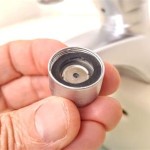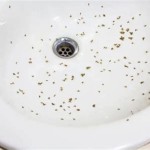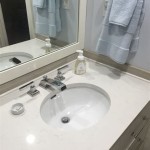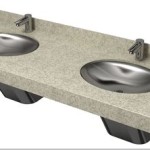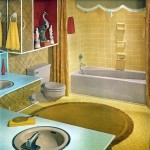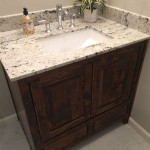Unfinished Bathroom Vanity Sink Base Cabinet: A Comprehensive Guide
An unfinished bathroom vanity sink base cabinet represents a versatile and cost-effective foundation for creating a personalized bathroom space. Unlike pre-finished cabinets, unfinished options offer the freedom to customize the appearance through staining, painting, or other decorative techniques. This adaptability makes them a popular choice for homeowners undertaking bathroom renovations or new construction projects, allowing precise matching to existing decor or the implementation of a completely new design scheme.
The term "unfinished" refers to cabinets constructed from raw wood, ready to be finished according to the buyer's preference. Typically, these cabinets are assembled but lack any applied finish, such as a stain, paint, or protective coating. This bare state allows for complete control over the final aesthetic and protective qualities of the cabinet. The choice of wood species, construction methods, and dimensions all contribute to the overall utility and longevity of the unfinished vanity sink base cabinet.
Understanding the nuances of unfinished bathroom vanity sink base cabinets is crucial for ensuring a successful installation and achieving the desired aesthetic outcome. This guide will explore the benefits of choosing an unfinished option, factors to consider when selecting a cabinet, finishing techniques, and maintenance recommendations.
Benefits of Choosing an Unfinished Vanity Sink Base Cabinet
The decision to opt for an unfinished bathroom vanity sink base cabinet presents several distinct advantages over pre-finished models. These benefits primarily revolve around customization, cost-effectiveness, and quality control.
Customization: The most significant benefit lies in the unparalleled customization options available. Homeowners can select the exact stain or paint color to perfectly match their existing bathroom fixtures, tile, and wall colors. This level of personalization is often difficult or impossible to achieve with pre-finished cabinets, which are typically offered in a limited range of colors and styles. The ability to choose the finish also allows for the creation of unique and personalized designs not readily available on the market, such as distressed finishes, custom glazes, or hand-painted details.
Furthermore, the unfinished surface allows for easier modification. If the cabinet requires minor adjustments to accommodate plumbing or other installations, the bare wood is simpler to cut, drill, and sand compared to a finished surface. This adaptability can be particularly valuable in older homes where plumbing configurations may be unconventional.
Cost-Effectiveness: Unfinished cabinets often have a lower initial cost compared to pre-finished alternatives. This difference in price can be attributed to the elimination of the finishing process in the manufacturing stage. While the homeowner will incur the cost of finishing materials and labor (if not performing the finishing themselves), the overall expense can still be lower, especially when considering the potential cost of custom pre-finished options. This makes unfinished vanities a viable option for budget-conscious homeowners looking to achieve a high-end look without breaking the bank.
The cost savings can be particularly significant for larger projects involving multiple bathrooms or extensive renovations. The ability to purchase unfinished cabinets in bulk and apply a consistent finish throughout the project can result in substantial economies of scale.
Quality Control: Choosing an unfinished cabinet allows for greater control over the quality of the materials and the finishing process. Homeowners can carefully inspect the raw wood for imperfections and ensure that the cabinet is constructed from high-quality materials. This level of scrutiny is not always possible with pre-finished cabinets, where the finish may conceal underlying flaws in the wood.
The finishing process itself also allows for greater oversight. Homeowners can select high-quality stains, paints, and sealers that provide superior protection and durability compared to the finishes used on some mass-produced pre-finished cabinets. This control over the materials and process can result in a more durable and long-lasting finished product.
Factors to Consider When Selecting an Unfinished Vanity Sink Base Cabinet
Selecting the right unfinished bathroom vanity sink base cabinet requires careful consideration of several key factors, including wood species, cabinet construction, dimensions, and style. These factors will influence the cabinet's durability, aesthetic appeal, and overall suitability for the intended bathroom space.
Wood Species: The type of wood used in the construction of the cabinet significantly impacts its appearance, durability, and cost. Common wood species for unfinished cabinets include oak, maple, birch, and pine. Each species has unique characteristics in terms of grain pattern, hardness, and staining properties.
Oak is a popular choice due to its durability, distinctive grain pattern, and affordability. Maple is known for its smooth, uniform texture and ability to accept a wide range of stains and paints. Birch is a cost-effective option that offers a similar appearance to maple but is slightly softer. Pine is a soft wood that is easy to work with and relatively inexpensive, but it is more susceptible to dents and scratches. The selection of wood species should be based on the desired aesthetic, budget, and anticipated level of use.
Cabinet Construction: The construction method used to assemble the cabinet influences its strength, stability, and longevity. Common construction methods include face-frame construction, frameless construction (also known as European-style), and a combination of both. Face-frame cabinets have a frame attached to the front of the cabinet box, providing added stability and a traditional look. Frameless cabinets have no face frame, offering a more modern and streamlined appearance. The choice of construction method should be based on the desired aesthetic and the anticipated weight load of the cabinet.
Beyond the overall construction style, the quality of the joints and hardware is also crucial. Dovetail joints are stronger and more durable than butt joints or other less robust connection methods. High-quality hinges and drawer slides will ensure smooth and reliable operation for years to come.
Dimensions: The dimensions of the vanity sink base cabinet must be carefully considered to ensure it fits properly within the available bathroom space and accommodates the chosen sink. Accurate measurements of the bathroom are essential before selecting a cabinet. Consider the width, depth, and height of the cabinet, as well as the placement of plumbing lines and any other obstructions. Standard vanity heights typically range from 30 to 36 inches, but taller or shorter options may be available to accommodate specific needs.
The dimensions of the sink basin and faucet must also be considered to ensure they are compatible with the cabinet. Under-mount sinks require a solid countertop surface to which they can be attached, while vessel sinks sit on top of the countertop. The faucet must be properly sized and positioned to provide adequate clearance and functionality.
Style: The style of the unfinished bathroom vanity sink base cabinet should complement the overall design aesthetic of the bathroom. Common styles include traditional, contemporary, transitional, and rustic. Traditional vanities often feature ornate details, raised panel doors, and decorative hardware. Contemporary vanities typically have clean lines, minimalist designs, and sleek hardware. Transitional vanities blend elements of both traditional and contemporary styles. Rustic vanities often incorporate natural materials, distressed finishes, and simple designs.
The style of the cabinet should also be consistent with the other fixtures and finishes in the bathroom. Consider the color and style of the tile, flooring, and lighting when selecting a vanity. A cohesive design scheme will create a more harmonious and visually appealing bathroom space.
Finishing Techniques for Unfinished Vanity Sink Base Cabinets
The finishing process is crucial for transforming an unfinished bathroom vanity sink base cabinet into a durable and aesthetically pleasing component of the bathroom. This process involves several steps, including preparation, staining or painting, and sealing. Proper preparation is essential for achieving a smooth and even finish. The choice of stain or paint will determine the color and overall aesthetic of the cabinet. Sealing provides protection against moisture and wear and tear.
Preparation: The first step in the finishing process is to thoroughly prepare the cabinet surface. This involves sanding the wood to remove any imperfections, such as splinters or rough spots. Use progressively finer grits of sandpaper, starting with a coarser grit (e.g., 120 grit) and finishing with a finer grit (e.g., 220 grit). Sand in the direction of the wood grain to avoid scratching the surface. After sanding, remove all dust and debris with a tack cloth or vacuum cleaner.
If the cabinet has any knots or sap pockets, these should be sealed with a knot sealer or shellac-based primer to prevent them from bleeding through the finish. Any holes or imperfections can be filled with wood filler and sanded smooth after drying.
Staining or Painting: Once the cabinet is properly prepared, the next step is to apply a stain or paint. Staining allows the natural grain of the wood to show through, while painting provides a solid color finish. Choose a stain or paint that is specifically designed for use on wood and that is compatible with the chosen sealer.
When staining, apply the stain evenly with a brush, cloth, or sponge. Allow the stain to penetrate the wood for the recommended time, then wipe off any excess stain with a clean cloth. Apply multiple coats of stain if necessary to achieve the desired color intensity. Allow each coat to dry completely before applying the next.
When painting, apply a primer coat to improve adhesion and coverage. Allow the primer to dry completely before applying the paint. Apply multiple thin coats of paint, allowing each coat to dry completely before applying the next. Use a high-quality brush or roller to achieve a smooth and even finish.
Sealing: The final step in the finishing process is to apply a sealer to protect the cabinet from moisture and wear and tear. Common sealers include polyurethane, varnish, and lacquer. Polyurethane is a durable and water-resistant sealer that is ideal for use in bathrooms. Varnish is a traditional sealer that provides a warm and glossy finish. Lacquer is a fast-drying sealer that is often used in professional woodworking shops.
Apply the sealer evenly with a brush or spray gun. Allow each coat to dry completely before applying the next. Apply multiple coats of sealer for maximum protection. Lightly sand between coats with fine-grit sandpaper to remove any imperfections and improve adhesion.
Following these finishing techniques will help ensure a durable and beautiful finish for the unfinished bathroom vanity sink base cabinet, enhancing both its aesthetic appeal and its longevity within the bathroom environment.

Project Source 36 In W X 35 H 23 75 D Natural Unfinished Oak Sink Base Fully Assembled Cabinet Flat Panel Square Door Style The Kitchen Cabinets Department At Com

Project Source Unfinished 36 In Natural Rustic Oak Bathroom Vanity Base Cabinet Without Top The Vanities Tops Department At Com

Vanity Base 36 Jamestown Unfinished Kitchen Cabinet Left Drawers Seconds Surplus

Hampton Bay 36 In W X 21 D 34 5 H Assembled Bathroom Base Cabinet Medium Oak Without Shelf Kvsb36 Mo The Home Depot

Hampton Bay 36 In W X 24 D 34 5 H Assembled Sink Base Kitchen Cabinet Unfinished With Recessed Panel Ksb36 Uf The Home Depot

Project Source Unfinished 36 In Natural Rustic Oak Bathroom Vanity Base Cabinet Without Top The Vanities Tops Department At Com

Vanity Base 36 Jamestown Unfinished Kitchen Cabinet Seconds Surplus

Project Source Unfinished 36 In Natural Rustic Oak Bathroom Vanity Base Cabinet Without Top The Vanities Tops Department At Com

Ws V3621dl Shaker White 36 Vanity Combo Bases Three Drawers Left Cabinetselect Com

Providence 36 Solid Wood Bathroom Vanity In Natural Oak From James Martin Furniture
Related Posts

